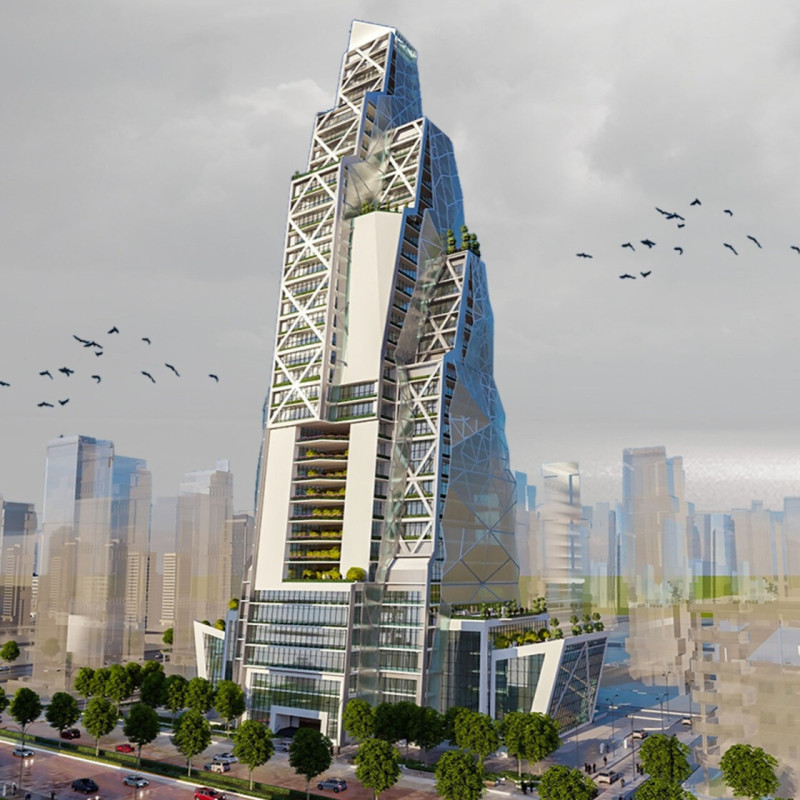5 key facts about this project
The Bathra Tower is located in Taif, Saudi Arabia, an area known for its beautiful landscapes and rich culture. The tower serves multiple purposes, blending with the mountain backdrop of Mount Bathra. Its design draws from the local geography, making it a part of the region while focusing on environmental responsibility and sustainability.
Sustainability Features
The Bathra Tower prioritizes sustainability through various innovative design elements. Breathing blocks are used within the building to absorb pollutants, improving indoor air quality. This feature plays a crucial role in managing air pollution, ensuring a healthier environment for everyone inside.
The building also incorporates a gray water recycling system. This system repurposes water from sinks and showers for irrigation, supporting efforts to conserve water. By utilizing wastewater in this manner, the tower reduces its ecological impact and showcases its commitment to sustainable practices.
Energy Efficiency Strategies
The southern façade of the building is designed with energy efficiency in mind. Research shows that this facade can effectively capture solar energy, which helps to lessen heat in the building. Balconies are thoughtfully positioned with a two-meter setback that provides shade, further protecting interior spaces from excessive heat.
Wind Management
Wind conditions are another important consideration in the design of the Bathra Tower. Analysis indicates that the western façade faces the most wind exposure. To address this, a secondary façade is added to shield the structure from wind, helping to create a more comfortable environment for occupants.
The tower features pvdf fabric for its tensile cladding. This material is lightweight yet strong, allowing for flexible design options that align with the overall vision of the project. The combination of these elements results in a building that is both functional and connected to its natural surroundings.



















































